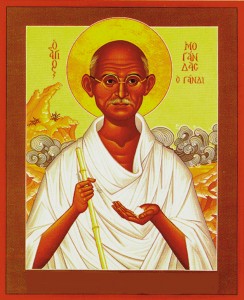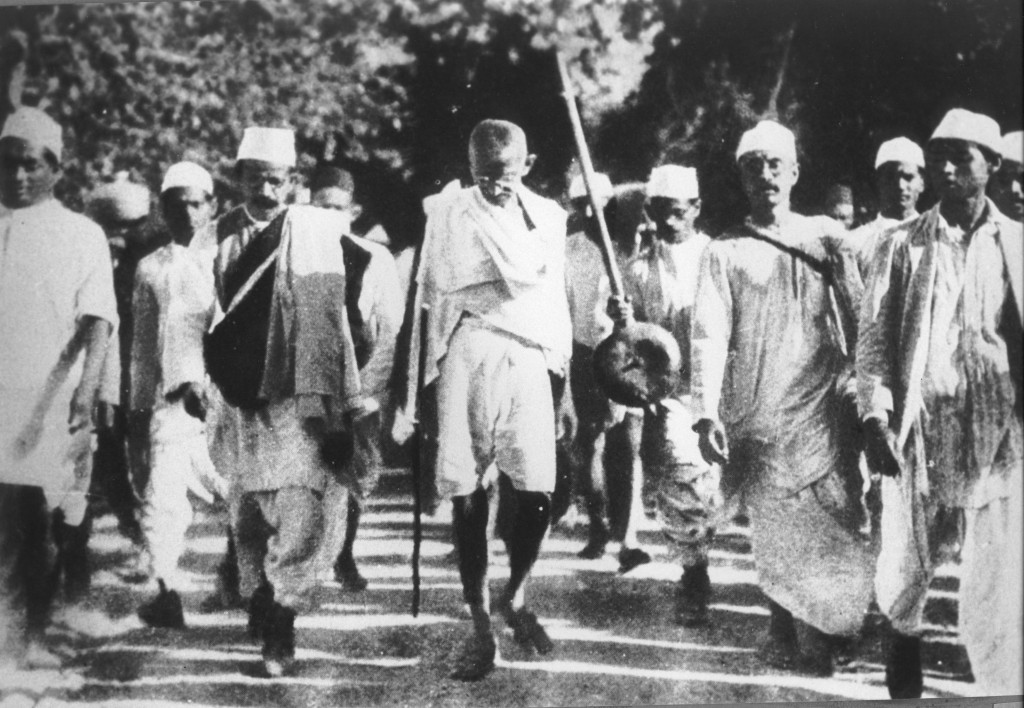by Arne Naess
The Contemporary Reaction against Nonviolence
The period spanning the mid-1960s to the mid-1970s witnessed an upsurge of physical violence and a proliferation of recommendations to use manifest violence, physical and verbal. It inundated colonial, racial, and educational controversies in Europe, America, India, and many other areas. Sometimes it has been systematically and consistently anti-Gandhian, being in part a direct reaction against the limited success of Gandhian and pseudo-Gandhian preaching and practice.
We shall not enter here into the controversies about the causes of this development, which we vaguely characterize as the “new violence.” A symptom, rather than a cause, is widespread dissatisfaction, indignation, and impatience when considering the slowness of the movement of liberation in the colonial, racial, and educational spheres. The imperatives “Do it quicker!” and “Freedom now!” testified to this demand for immediate, radical change. The slogan “Revolution!” has invaded all spheres of discussion. Revolution is generally conceived as a violent overthrowing, idealizing “power over” and coercion at the cost of “power to.” Changes should be forced on opponents; agreement and compromise should be shunned. The slogans are sometimes formed consciously so as to be in direct opposition to the preaching of nonviolence.
Read the rest of this article »
by John S. Moolakkattu
 “Mohandas Gandhi of India”;
“Mohandas Gandhi of India”;
original icon by Robert Lentz;
thanks to Trinity Stores
Is Gandhi a human ecologist? If we go by the ideas generated by the environmental movement in India, which is strongly influenced by Gandhi, the answer is a definite ‘yes’. But Gandhi’s place in the ecological movement is yet to be established on a secure footing internationally. Even the recent Encyclopedia of Human Ecology edited by Julia R Miller et al. (2003) omitted Gandhi as one of its entries in its otherwise impressive list. Ecological consciousness, understandably, is a phenomenon that gained momentum only in the last four decades or so. But the roots of it can be traced to worldviews, traditions, culture, religion and folklore. Ecology is the science that focuses on the relationships between living organisms and their environment. Human ecology is about relationships between people and their environment. Human activities impact on ecosystems. Conversely, ecosystems are strongly influenced by the social system in which people live. Our worldview both as individuals and as society shapes the way we formulate our strategies for action (Marten 2001).
Read the rest of this article »
by Satish Kumar
When human beings consider themselves to be the masters of the earth and have dominion over it they are more likely to abuse it and exploit it.
Much of our conventional education is learning “about” nature. We study nature as something separate from us and as an object, which is useful to us. We seem to consider ourselves either masters of nature or, if more enlightened, then stewards of nature. We study nature because we wish to know our servant or our protectorate in order to make best use of nature for a prolonged period.

Ruud van EMPEL, Theatre # 2; Cibachrome photograph, 2010; 120 x 120 cm.;
courtesy, Flatland Gallery.
When human beings consider themselves to be the masters of the earth and have dominion over it they are more likely to abuse it and exploit it. Therefore, the environmentalists take a step in the right direction by considering themselves as stewards of the earth. Stewardship entails responsibility. In such a view of the environment people are more likely to conserve and care. However, both these views are anthropocentric. From both these points of view human beings are a superior species, having a higher status. Norwegian philosopher Arne Naess has named such a human centered relationship with the natural environment as “shallow ecology”.
Read the rest of this article »
by Rosemary Morrow
“It is, perhaps, the greatest failure of collective leadership since the first world war. The Earth’s living systems are collapsing, and the leaders of some of the most powerful nations – the US, the UK, Germany, Russia – could not even be bothered to turn up and discuss it. Those who did attend the Earth summit last week solemnly agreed to keep stoking the destructive fires: sixteen times in their text they pledged to pursue “sustained growth”, the primary cause of the biosphere’s losses.”
This was the opening paragraph by George Monbiot in the Guardian (25 June 2012) at the end of the Earth Summit convened to rescue all life from global climate change and other degradation. Those of us who follow the science feel dismayed.
Yet it has left us with only one path, that of ahimsa, nonviolence and almost certainly civil disobedience. As with M. Gandhi’s struggle for independence, we must be prepared to break the laws. We must disregard those who have no care for Nature and Life as we know it. We must abandon any sense that we will be saved by others. We must act as Earth’s residents, to restore Earth’s living systems, impelled by kindness, compassion and conscience for Nature.
Read the rest of this article »
by Dr. L. M. Singhvi
The Jain tradition, which enthroned the philosophy of ecological harmony and non-violence as its lodestar, flourished for centuries side by side with other schools of thought in ancient India. It formed a vital part of the mainstream of ancient Indian life, contributing greatly to its philosophical, artistic and political heritage. During certain periods of Indian history, many ruling elites as well as large sections of the population were Jains, followers of the Jinas (Spiritual Victors).
The ecological philosophy of Jainism, which flows from its spiritual quest, has always been central to its ethics, aesthetics, art, literature, economics and politics. It is represented in all its glory by the 24 Jinas or Tirthankaras (Pathfinders) of this era whose example and teachings have been its living legacy through the millennia.
Although the ten million Jains estimated to live in modern India constitute a tiny fraction of its population, the message and motifs of the Jain perspective, its reverence for life in all forms, its commitment to the progress of human civilization and to the preservation of the natural environment continues to have a profound and pervasive influence on Indian life and outlook.
In the twentieth century, the most vibrant and illustrious example of Jain influence was that of Mahatma Gandhi, acclaimed as the Father of the Nation. Gandhi’s friend, Shrimad Rajchandra, was a Jain. The two great men corresponded, until Rajchandra’s death, on issues of faith and ethics. The central Jain teaching of ahimsa (non-violence) was the guiding principle of Gandhi’s civil disobedience in the cause of freedom and social equality. His ecological philosophy found apt expression in his observation that the greatest work of humanity could not match the smallest wonder of nature.
Read the rest of this article »
by Vandana Shiva

Gandhi on the Salt March, 1930.
In Hind Swaraj, Gandhi exhorts using ‘soul force’ as a means to seek ‘right livelihood’ – which is what real freedom is all about. Gandhi’s Hind Swaraj has, for me, been the best teaching on real freedom. It teaches the gospel of love in place of hate. It replaces violence with self-sacrifice. It puts ‘soul force’ against brute force. For Gandhi, slavery and violence were not just a consequence of imperialism: a deeper slavery and violence were intrinsic to industrialism, which Gandhi called “modern civilisation”.He identified modern civilisation as the real cause of loss of freedom. “Civilisation seeks to increase bodily comforts and it fails miserably even in doing so… This civilisation is such that one has only to be patient and it will be self-destroyed.”
Read the rest of this article »






